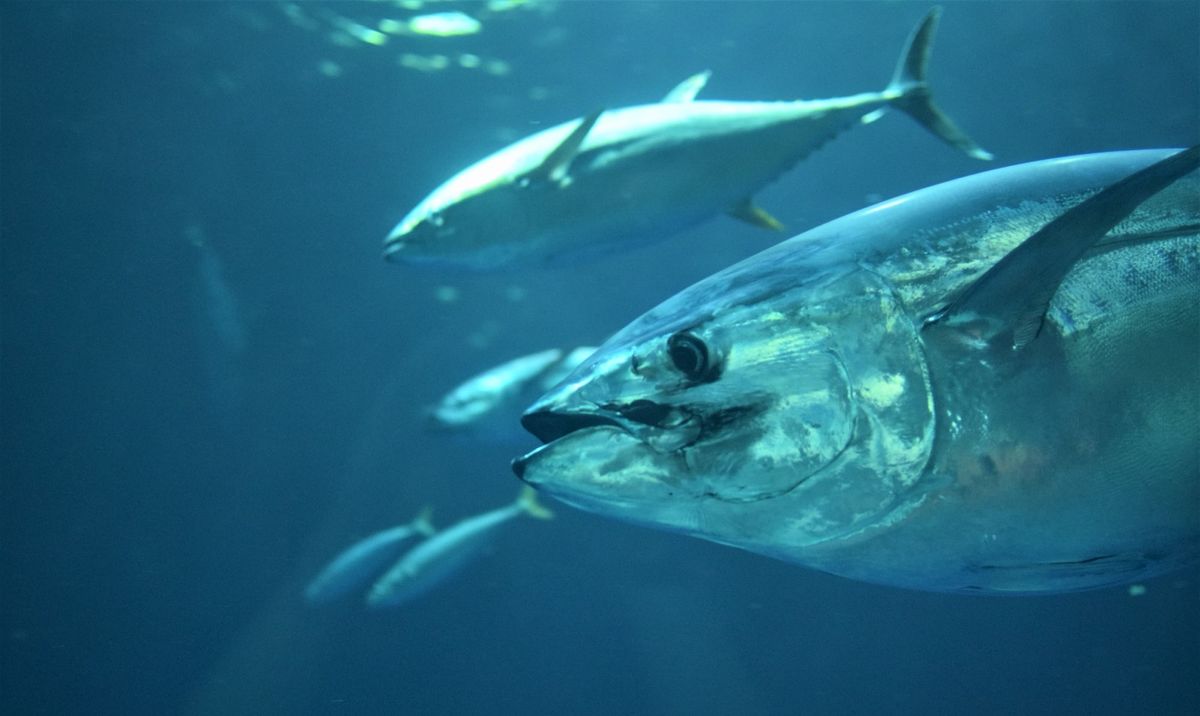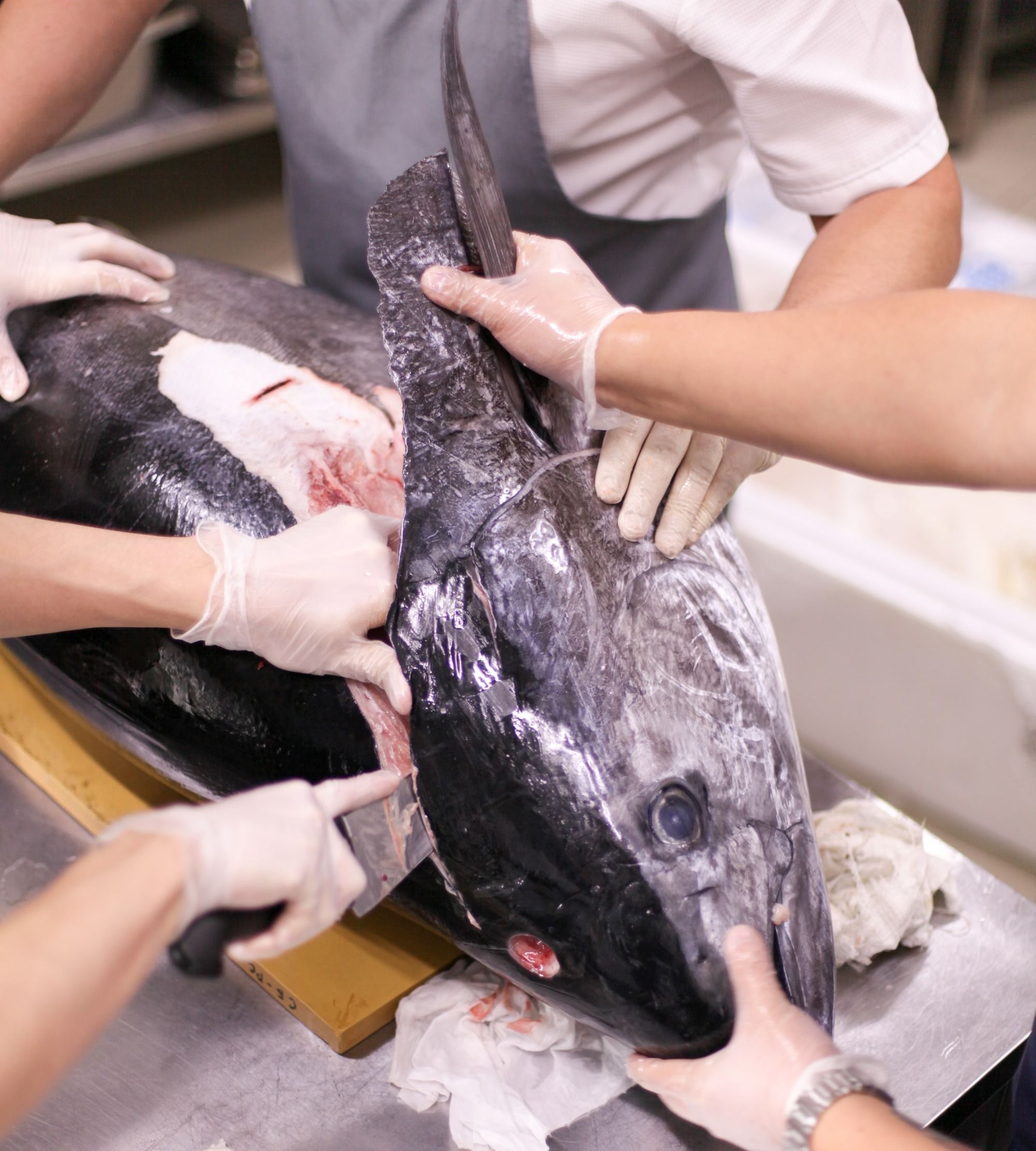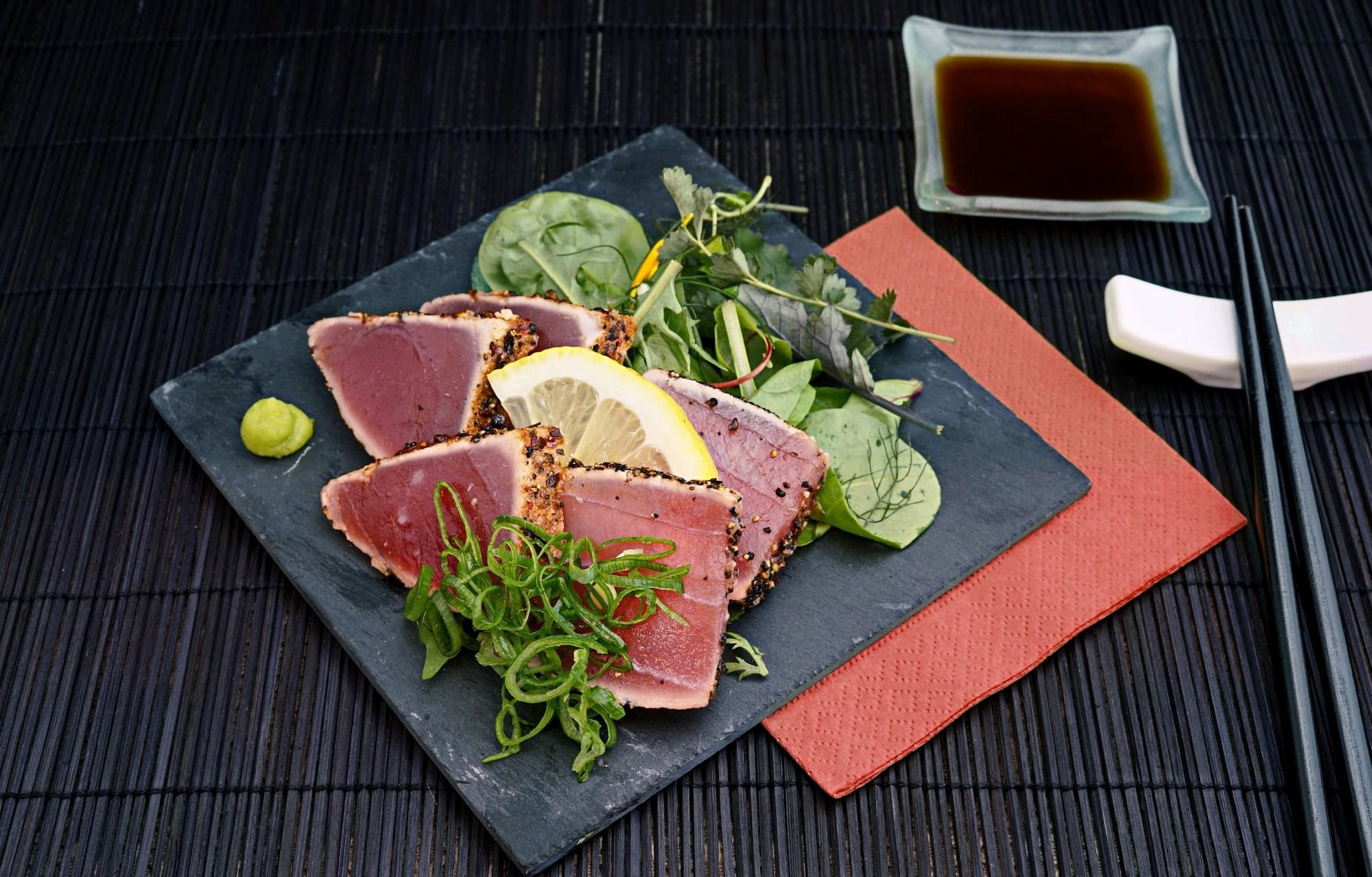Why Is Bluefin Tuna So Expensive?
Discover why Bluefin Tuna's unique taste and overfishing challenges make it one of the most expensive seafood delicacies

What is Bluefin Tuna?
Bluefin Tuna, known as "Maguro" (鮪) in Japanese, hails from the vast expanses of the Atlantic and Pacific Oceans.
This name, "Maguro," originates from "Meguro," highlighting its unique black eyes. Not just a culinary delight, the Pacific bluefin stands as a giant predator fish, renowned for its impressive size.
Its a luxurious seafood, buttery taste, especially the coveted "otoro" belly section, has cemented its place in gourmet sushi and sashimi dishes across the globe.
Bluefin Tuna: The Most Expensive Fish in The Sea
Bluefin tuna, renowned for its beefy richness and distinctive blend of texture and flavor, is a prized commodity.
Auctioned directly from Japanese docks, it often finds its way to premium sushi venues. In 2013, a record was set when a 489-pound Bluefin fetched $1.8 million.
However, 2019 saw an even bigger 612-pound pacific Bluefin tuna achieving an astonishing $3 million, translating to about $4,900 per pound. By 2023, the opening bluefin auction in Japan recorded a $273,000 sale.
Often chosen for raw dishes like kuro maguro, the finest eateries often source their Bluefin from Japan's Tsukiji fish market, where tunas can exceed 400 pounds in weight.
It's worth noting that while the first catches do fetch astronomical prices in auctions, these are not representative of the prices for the rest of the season.
They're symbolic and are part of a broader cultural and economic that plays out in the Japanese seafood industry.
Types of Bluefin Tuna
Atlantic Bluefin Tuna (Thunnus thynnus): Indigenous to the Atlantic Ocean and the Mediterranean Sea, this species stands out not only for its impressive size but also its high culinary value, particularly in European and North American markets. Its rich flavor often commands premium prices in upscale restaurants.
Pacific Bluefin Tuna (Thunnus orientalis): Originating from the Pacific Ocean, this species is extensively harvested, predominantly for the Japanese culinary scene. Its revered status in sushi dishes has driven its market price considerably high, reflecting its demand.
Southern Bluefin Tuna (Thunnus maccoyii): Residing in the oceans of the southern hemisphere, this species, while being the smallest among the Bluefins, is no less esteemed. Its culinary value ensures that it fetches competitive prices in global gourmet markets.
Interesting Facts About Maguro
The Bluefin tuna stands out in the ocean not just for its size, but also its remarkable capabilities. These fish are known to traverse vast distances, covering thousands of miles annually, and can dive to impressive depths of up to 4,000 feet.
Their large size, sometimes weighing as much as 990 lbs, is equally notable. Unique among many marine species, the Bluefin is warm-blooded, allowing it to roam colder waters with ease.
Their sleek, streamlined bodies let them speed through waters at up to 43 mph, and their exceptional eyesight makes them formidable predators.
Beyond their natural wonders, the Bluefin's rich, buttery meat has made it a culinary treasure, especially prized in dishes like sashimi and sushi across the globe.
Opting for Bluefin tuna caught through sustainable methods like pole and line fishing becomes even more critical given the species' declining numbers. This choice supports both culinary indulgence and marine conservation.

History & Origin
In the 1960s, Bluefin tuna was an undervalued catch in the U.S., often used for cat food. At the same time, it wasn't a favorite in Japan due to its fatty consistency.
But as sushi bars became fashionable in America, the appetite for toro - Bluefin's rich belly meat - surged. By the 1970s, its demand skyrocketed globally, especially in Japan.
This boom led to a staggering increase in bluefin fishing in the Western Atlantic by over 2,000% between 1970 and 1990.
Prices soared in response, especially for fish destined for Japan. Today, the cost of maguro, particularly the prized hon maguro (bluefin tuna), varies based on quality, season, and origin.
Wild-caught bluefin typically commands a higher price than its farmed counterpart.
Maguro: Served as Sashimi or Sushi

The flavor profile of maguro sushi or sashimi is influenced by both the tuna species and the specific cut of meat. Generally speaking, tuna meat is delicate with a pronounced flavor.
The deep red, gleaming section from the body's center, referred to as akami (赤身) in Japanese, is notably lean.
This cut is characterized by its subtly tangy taste, complemented by a robust umami depth. Its mouthfeel is velvety yet firm, providing a delightful contrast.
Esteemed sushi omakase chef Jiro Ono from Sukiyabashi Jiro has mentioned, "Shibi (adult bluefin tuna), perfect for crafting nigiri and rolls, undeniably deserves its title as the 'King of Sushi'.
Meanwhile, the fatty portion of maguro is termed toro (トロ). This name has roots in the term "torori (とろり)", which captures the melt-in-the-mouth sensation of consuming toro.
Predominantly found on the maguro's back and belly, toro stands out with its luxurious fattiness. It's incredibly tender, boasting a sweet, buttery flavor that's distinctive and unforgettable.
The Ideal Season for Bluefin Tuna
The richness of maguro's fat varies based on both the season and where it's caught.
Those harvested from colder ocean regions just before the spawning season tend to be fattier, making them highly prized.
For maguro found in the North Pacific, the optimal months to catch them are from September to January. During these months, they accumulate more fat, particularly in the belly and back areas.
On the other hand, maguro in tropical waters breeds throughout the year, resulting in varied quality over different months.
If you're focusing on the Atlantic's maguro, the prime months are January to April in the Gulf of Mexico and October to April for those in the East Atlantic.
However, maguro raised in fish farms can be sourced year-round, maintaining a consistent quality.
Why is Bluefin Most Preferred Over the Second-Best Tuna, Yellowfin?
Bluefin Tuna stands as a global culinary icon, cherished by chefs and gourmets for its rich texture and deep-red hue.
Out of all tuna species, Bluefin boasts the darkest and most buttery flesh, delivering a distinct taste and substantial flakiness that has made it the top choice for sashimi and sushi enthusiasts.
On the other hand, Yellowfin Tuna offers a leaner profile, characterized by a subtler and more delicate taste. Unlike the fatty allure of Bluefin, Yellowfin presents a more solid and less fatty consistency.
The Reason Behind its High Price Tag
Bluefin tuna, prized for its rich taste, commands a high price tag for several reasons.
One of the primary factors is the rarity of the species due to overfishing. The heightened demand for Bluefin, especially in sushi-loving countries like Japan, has rendered it endangered.
Adding to its rarity is the slow growth rate of the Bluefin. Unlike other fish, they take many years to mature and can grow to enormous sizes.
The meticulous and traditional fishing methods used to catch these giants are labor-intensive, further amplifying the cost.
Japan holds a special place in the Bluefin market, not just as its primary consumer, but also as a center of expertise.
Many believe that the Japanese have honed the skill of butchering Bluefin better than anyone else, given its long-standing presence in their cuisine.
As a testament to this expertise, fishing companies worldwide, including those in the United States, often ship their catch to Japan for butchering, only to import the prepared meat back.
This intricate process involves preserving the fish's freshness during transit with climate-controlled containers, which adds significant costs due to the required technology and energy.
Tuna, like land-based meats, has diverse cuts with varying qualities and prices.
The most affordable cut is 'akami', or the lean red meat at the fish's center. The taste of this section can hint at whether the tuna is wild-caught or farm-bred, as the latter often has a sardine-like flavor.
The most sought-after cut is the fillet from the otoro section near the collar. Rich in fat and flavor, it commands a higher price. Another prized cut is the 'chutoro', valued for its mix of meat and fat.
Ultimately, the butcher's skill in preparing these cuts adds to the tuna's final cost.
Lastly, the origin of the Bluefin plays a crucial role in its pricing. While Boston emerges as a key Bluefin fishing ground during summer and fall, Japan boasts the most coveted catches in winter, particularly around Oma.
The Bluefin from this region is richer in fat, offering a juicier bite. With such premium quality, it's no wonder that Oma Bluefin can cost up to $400 a pound in normal season, making it a luxurious addition to upscale kaiseki restaurant menus.


